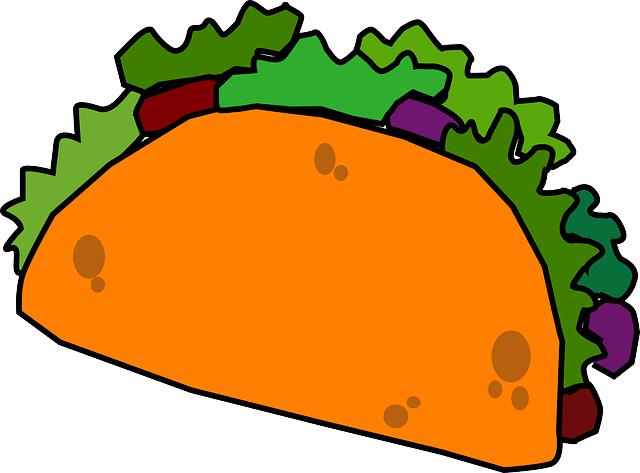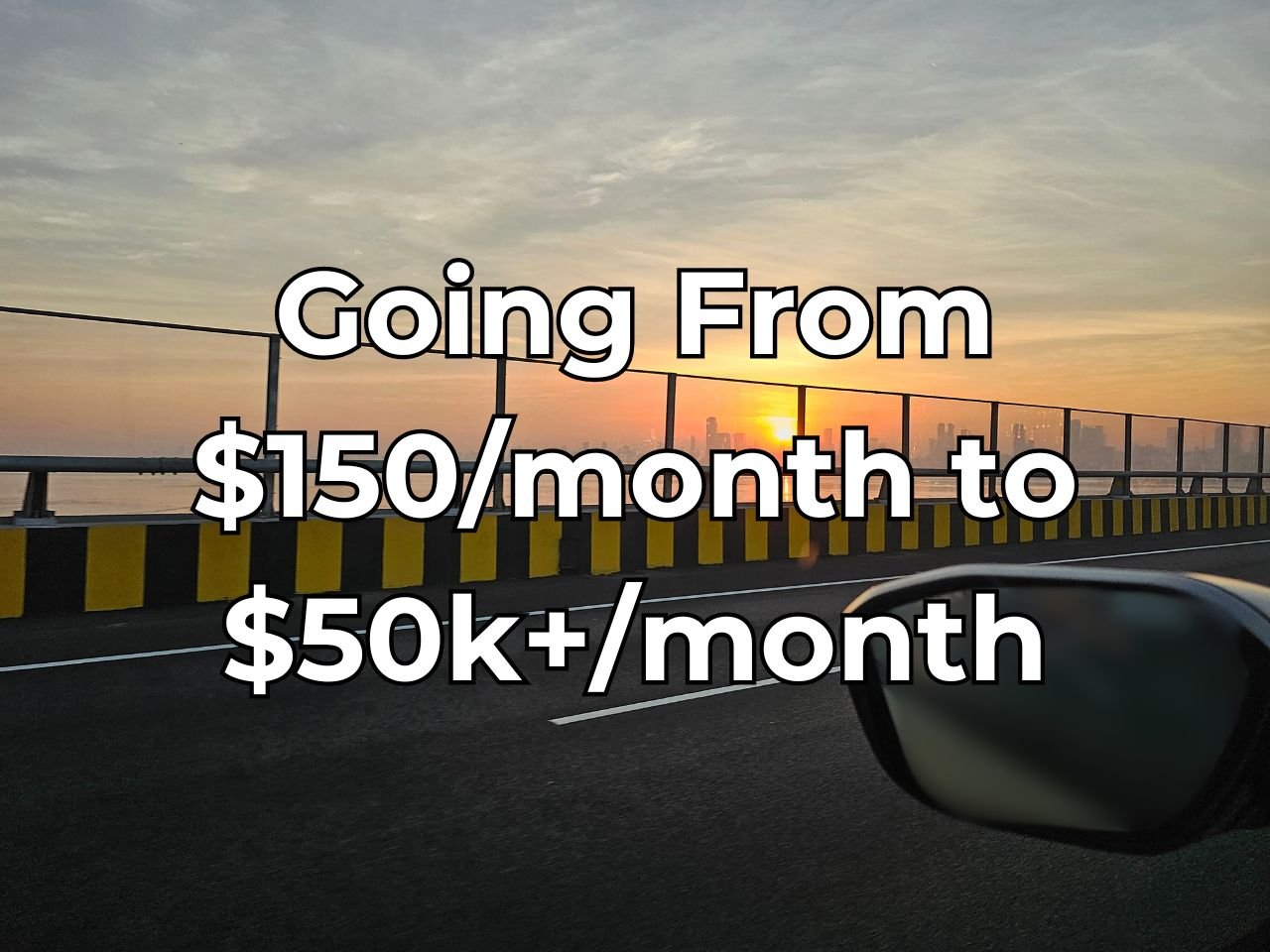From the desk of Harsh Strongman
Subj: How to get protein as a vegetarian (with high protein vegetarian diet plan) for Indians
Note: This article has been written for North Indian diets (vegetarian and no eggs).
When I started lifting, I knew eating lots of protein was important, but I could not figure out how to get enough protein on a vegetarian diet.
I read all the articles on the topic and found them to be nonsensical and unhelpful. Over the years, I’ve figured out what works and what doesn’t, and I can say that most of the information online is garbage.
(Here’s a fun rant, after which I’ll get to the meat of the article.)
Rant: Most articles on “How to get more protein for vegetarians” are written by people with zero practical experience

I read all the articles about high protein vegetarian Indian diets online back in the day, and even today, I find that most articles on the topic are written by journalism interns and people who have no idea what they’re talking about.
For example, most articles on how to get more protein as a vegetarian say “eat mung sprouts”. It’s often their #1 recommendation. And it’s utterly ridiculous.
While it’s true that mung sprouts are protein-rich (they’ve got a decent amount of protein on a per calorie basis), there’s just no way that you can eat enough of them to get a decent amount of protein in you.
Let’s say you eat 400 grams of mung sprouts. That’s a LOT of mung sprouts. It’ll make a hefty lunch for many people.
And how much protein did you get for your entire meal?
Only 16 grams.
In other words, there’s no way you can get a decent amount of protein eating tons of mung sprouts, despite the fact that mung sprouts are “rich in protein”.
The same applies to a lot of other foods that are recommended in these articles: pulses, legumes, dals, etc. – while it’s true that they are protein-rich, but there’s no way you can eat them in the large quantities you’d need to get the amount of protein you require as someone who’s strength training.
Most articles on getting more protein for vegetarians are written by people with zero practical experience. They appear to be written by people who don’t lift, but went to school and learnt that “dals and legumes and sprouts are high in protein” in science class and are just regurgitating the same things in their articles in different words.
[Note: This is not to demonize mung beans. Mung is rich in micronutrients and should absolutely be consumed. However, if they form your primary source of protein, you’re living in a make-believe academic world.]
(Rant over)
Before I get into the actual meat of the article – I want to address two things: 1) How much protein do you need in a day and 2) Does the source of protein matter (i.e. is the protein from milk as good as the protein from dal, and if not, then which is better?)
How much protein do you need to maximize muscle gain?

There are a lot of bad articles about this topic as well, but for different reasons. I’ve seen estimates as high as 2 grams per pound of bodyweight, but they’re all mostly written by companies trying to sell you lots of protein powder. If you listen to them, you’d be eating 5 scoops of whey per day and still struggle to meet their minimum protein goals.
I won’t get too much into this, because it’s off-topic, and I’ve gone plenty off-topic already, but if you want the science and studies behind it, read this article.
Here is the short version: There is normally no advantage to consuming more than 0.82g/lb (1.8g/kg) of protein per day to preserve or build muscle for natural trainees. This already includes a mark-up, since most research finds no more benefits after 0.64g/lb (1.4g/kg).
(Further, this assumes that you’re lean. If you’re obese, you’d need to deduct the body fat % from your weight to find out your lean body mass and use that as a metric to calculate how much protein you need to eat.
For example, if you’re 120 kg and are at 40% body fat, you’d need to use 120*(1-0.4) = 72 kg as your lean body mass metric.
To calculate your body fat percentage, all you need is a pair of skinfold fat calipers.
Fill your skinfold measurements up here, and it should give you a pretty good estimate.)
If you are strength training, you should aim to get at least 1.4 grams of protein per kg of lean body mass and ideally try to get 1.8 grams per kg.
You can eat more protein if you like – it’s healthy and is the most thermogenic of the three macronutrients – there are no disadvantages to eating more protein. However, if you’re reading this article, you’re probably struggling to hit your 1.4-1.8 grams a day, and not worrying about overshooting.
Most vegetarian Indians eat about 40-50 grams of protein in a day, which is really low. Other than a lack of exercise, this is one of the reasons why most Indian youths are physically weak (almost always either obese or skinny fat) – they just don’t get enough protein in.
If you want to be strong, you need to eat enough protein. Your muscles are made up of protein, and if you’re not eating enough protein, you won’t have enough muscle, and you won’t be strong.
Is all protein the same?
No. And for two reasons: 1) Digestibility and 2) Amino-Acid Profile
Protein Digestibility
Not all foods are digested equally by humans. Some food sources have a lot of their protein end up in our feces and protein from other food sources gets completely absorbed.
Amino Acid Profile
Protein is comprised of amino-acids and different protein sources have different amino-acid profiles. There are 9 essential amino-acids, where the word essential means that the mammal body cannot synthesize them, and that we need to get them from our diets.
In general, plant based sources of protein tend to be deficient in one or more essential amino acids. If you get most of your protein from plants – you have to get your protein from a variety of plant sources so you can get plenty of all the essential amino-acids and don’t have too little of one of them.
Animal based protein sources tend to be rich in all amino-acids needed to build muscle. This is simply because of the fact that when you eat protein from an animal, the animal has already done the work of eating different plants and turning the plant protein into protein they can store in the form of muscle.
Obviously, animal muscle has all the amino acids you need to create muscle in your own body, as you are also an animal.

This is not normally too much of a problem as most Indian vegetarians usually consume a variety plant sources of protein (like grains with dals), but it’s worth knowing.
Putting the two together
There are two measures for how much protein a food actually provides to the human body – Protein digestibility-corrected amino acid score (PDCAAS) and Digestible Indispensable Amino Acid Score (DIAAS).
Both PDCASS and DIAAS measure protein quality based on the amino-acid requirements of humans and how much of the protein is digested.
PDCAAS is an older measure that considers the entire digestion tract all the way to fecal matter and thus overestimates protein digestion as it also counts the protein absorbed by bacteria in the large intestine.
PDCAAS is less accurate than DIAAS.
DIAAS is a newer measure that accounts for amino acid digestibility till the end of the small intestine.
DIAAS is a more accurate measure of amino acids absorbed by the body and the protein’s contribution to human amino acid and nitrogen requirements
Here is a chart showing different foods along with their PDCAAS and DIAAS scores:
| Food | PDCAAS | DIAAS |
| Milk Protein Concentrate | 1 | 1.18 |
| Pork | 1.17 | |
| Whole milk powder | 1 | 1.159 |
| Whole milk | 1 | 1.14 |
| Egg (hard boiled) | 1 | 1.13 |
| Whey Protein Isolate | 1 | 1.09 |
| Chicken breast | 1 | 1.08 |
| Egg | 1.01 | |
| Potato | 0.99 | 1 |
| Soybean | 1 | 0.996 |
| Chickpeas | 0.74 | 0.83 |
| Pea Protein Concentrate | 0.893 | 0.822 |
| Peas | 0.782 | 0.647 |
| Cooked rice | 0.616 | 0.595 |
| Cooked kidney beans | 0.648 | 0.588 |
| Oats | 0.57 | |
| Tofu | 0.56 | 0.52 |
| Roasted peanuts | 0.509 | 0.434 |
| Wheat | 0.463 | 0.40-0.48 |
| Almonds | 0.39 | 0.4 |
| Corn | 0.37 | 0.36 |
| Legumes | 0.70-0.89 | 0.68-0.88 |
As you can see above, animal protein sources tend to be superior in quality to plant protein sources both in terms of amino-acids and digestibility.
This is not me demonizing plant protein, but it’s simply the result of the fact that when you eat animal proteins (milk, eggs, meat, etc.) – the animal has already done the hard work of turning the protein from plants into protein suitable for animals (in composition and form).
I’ve digressed too much (again) but if you want to read more about protein quality, this paper is a good place to start. I will now get into the meat of what you actually wanted to read when you clicked the link to this article.
How to Increase Protein in a Vegetarian Indian Diet
The question of increasing protein in the Indian lifter’s diet is not just about quantity (number of grams), but also quality (getting it from the right sources so more of the protein eaten gets absorbed and used by the body).
I will recommend three main changes:
1. Add besan to your rotis

Most of you are eating wheat rotis. Besan (chickpea flour) has more than twice the protein content (22 grams protein per 100 grams besan) of wheat flour (10 grams protein per 100 grams wheat flour) and twice the DIAAS score (0.83 for chickpeas as opposed to 0.40 for wheat).
Besan also has a much lower glycemic index than wheat flour (Besan’s GI is around 35 while wheat flour’s GI is around 70). This means that eating besan is much less likely to give you diabetes over the long run.
Ideally, eat rotis that have 70-80% besan and only 20-30% wheat. This is because 100% besan rotis are hard to digest and very hard to make (it won’t stick together because it has no gluten).
Further, it’s a good thing to have some wheat in your rotis because as I mentioned above, each source of plant protein is deficient in one or more of the 9 essential amino acids. Besan is deficient in methionine and cysteine, which wheat is rich in. Combining them together is good sense.
Your ancestors were not eating lots of wheat
To everyone who says, “my ancestors ate wheat for thousands of years, so why are you suddenly asking me to reduce it?”…
The green revolution says hello.

Wheat wasn’t as popular in India before the green revolution.
When India became independent, we were short of food. We had famines, so in the late 1960s, we decided to adopt high yielding variety seeds of wheat (which are also more resistant to spoilage) and modern farming methods like tractors and chemical fertilizers and pesticides.
And now that wheat was the most available grain, everyone started eating wheat from the 70s and 80s.
Your ancestors were not eating lots of wheat flour. They were eating whatever grains grew locally, for example, bajra, jowar, ragi, rice, etc. (millets) depending on where they lived and what grew there.
Not only were your ancestors not eating lots of wheat, the wheat they did eat was different from the wheat you eat. Their wheat was Khapli, Bansi, Kathiya, Sona Moti and other traditional Indian wheat varieties, not high yielding GMO wheat with insanely high glycemic indexes.
In fact, the entire diet your ancestors used to eat is completely different from the diet you eat today.

Most north Indians today eat potatoes and wheat as their staple foods. Did you know that potatoes aren’t an Indian food at all? They were introduced in India by the Portuguese in the 1700s (i.e., only about 300 years ago). Your forefathers who lived 400 years ago didn’t know what a potato even was.
Tomatoes were introduced by the Portuguese in the 16th century i.e., 400 years ago. Your forefathers who lived 500 years ago didn’t know what a tomato was.
The same thing applies to pineapples, guavas, cashews, and even red chillies and more. They are not ancient Indian food. They were introduced in our diet very recently. This is not what you ancestors ate.
The vegetarian diet your ancestors ate 5,000 years ago and the vegetarian diet you eat today are entirely different diets, but that’s a different article for a different day.
2. Eat more paneer and dairy products

As a vegetarian, dairy is your primary source of animal protein. (If you eat eggs, eat them! Most vegetarian Indians don’t, so I won’t be covering them in this article.)
Animal protein is the best source of protein there is. Period. Animal protein is complete protein (not deficient in any of the nine essential amino acids) – you do not have to play the amino acid balancing game if your diet is rich in animal protein.
Animal protein also has the best absorbtion and the highest DIAAS and PDCAAS scores (see above). To top it off, animal protein does not come loaded with carbohydrates like plant protein.
In other words, animal sources not only contain more protein (in grams) but the protein quality is also higher (often much higher) than plant protein.
Once again, as a vegetarian, diary products are your main source of animal protein – so focus on getting most of your calories from this food group.
To illustrate, here’s a chart showing the split of the macro-nutrients in 1 serving worth of portions of three foods:
| Boiled Rajma (Kidney Beans) (250 grams) | Paneer (from Amul) (150 grams) | Chicken Breast (150 grams) | |
|---|---|---|---|
| Calories | 315 kcal | 444 kcal | 180 kcal |
| Protein | 21.5 g | 30 g | 33.8 g |
| Carbohydrates | 56.6 g | 6.8 g | 0 g |
| Fat | 1.2 g | 33 g | 3.9 g |
Notice something about paneer – it gets a ton of its calories from fat (1 gram of fat has 9 calories, while 1 gram of protein or carbohydrates have 4 calories each).
Paneer has pretty much the same amount of protein as Chicken Breast (the leanest meat) but is much higher in calories because of it’s high fat content.
This is the problem with most fresh dairy food sources – for all the protein, they also have a lot of fat in them i.e. lots of calories (again, 1 gram of fat has 9 calories while protein and carbs have only 4) which means that if you eat too much fresh dairy… you will end up eating too many calories and get fat!
I’m about to introduce you to the holy grail of vegetarian protein…
LOW-FAT Dairy Foods
Low fat dairy products remove a lot of the fat (and thus calories) from the dairy product and thus increase protein content in their servings by a LOT. You can get a lot of protein if you eat low fat dairy foods in your diet.
See for yourself:
| Calories | Protein | Carbs | Fat | |
| Low fat paneer (150 grams) | 225 | 28.5 | 4.5 | 10.5 |
| Skimmed Milk (300 ml) | 87 | 7.5 | 13.8 | 0.3 |
| Double Toned Milk (milk with 2 layers of cream removed) (300 ml) | 144 | 9.9 | 15.3 | 4.8 |
| Low Fat Dahi/Curd (150 grams) | 81 | 6.0 | 8.8 | 2.5 |
Notice that low fat paneer is almost as good as chicken breast in protein content and calories (and much better in both compared with chicken legs/thighs).
A glass of skimmed milk or double toned milk (you can make this at home) also gives you a decent amount of protein for not a lot of calories.
Low fat dairy is the holy grail of vegetarian protein.
Low fat paneer is the king of high protein vegetarian foods in India. It is almost as good as meat.
If you want to get in more protein, you need to incorporate more low fat dairy products in your diet.
If you live in a big city, you’ll be able to buy things like low fat paneer off the shelf. If you live in a small city where it’s common to get your milk from your milkman, you’ll need to remove all the ghee (i.e. fat) from your milk and then make your paneer.
3. Supplement with whey protein

As a vegetarian lifter, you will still need to supplement protein in your diet. It is simply too hard to eat a lot of protein from vegetarian sources, and supplements help you cover the gap easily.
Whey protein is the highest quality protein out there and has the best amino acid profile.
It’s very, very difficult to get 1.8 grams of protein in a reasonable amount of calories on a vegetarian diet without whey protein – so you should be supplementing with it.
I take two scoops a day, every day. This is the brand I use.
Note: Whey protein does not cause kidney stones. This is a myth circulated mainly by people with zero knowledge of nutrition and fitness and blindly repeat whatever they hear. These people will drink colas and sugar teas and eat biscuits, but when it comes to protein, they’ve got all kinds of nonsense. (I’m talking strictly about whey protein, not mass gainers, which I’ve never used and never researched.)
The last thing you want to hear is some fat bread eating dumbass with no muscle tell you how bad protein supplements are while they can’t even do 3 chin ups in a row.
The only real reason to not use whey protein is if you’re lactose intolerant, but in my life, I haven’t yet met a north Indian who was lactose intolerant, so it should be a non-issue. If you are lactose intolerant, you might need to spend a little more and buy whey protein isolates which contain much less lactose than regular whey protein.
High-Protein Vegetarian Indian Diet Plans
Here are some desi Indian high protein diet plans (no egg) that a north Indian can eat regularly. They have about 2000 calories – you will need to adjust them to your daily caloric requirements.
100 Gram Protein Indian Vegetarian Diet Plan (No Supplements Needed)
It’s very easy to get 100 gm protein diet (Indian) without using any supplements.
If you’ve wondered how to eat 100 grams of protein in a day as a vegetarian Indian, just follow the below.
| 100g protein a day meal plan (Indian Vegetarian) | ||||
| Food | Calories | Protein | Carbs | Fats |
| Breakfast: Milk | ||||
| Double Toned Cow’s Milk (350 ml) | 168 | 11.6 | 17.9 | 5.6 |
| Breakfast Total: | 168 | 11.6 | 17.9 | 5.6 |
| Lunch: 3 Paneer Parathas with Dahi and Chaas | ||||
| Low Fat Paneer (150 grams) | 225 | 28.5 | 4.5 | 10.5 |
| Low Fat Dahi (200 grams) | 81 | 6 | 8.8 | 2.5 |
| Ghee (3 tbsp / 10 grams) | 90 | 0 | 0 | 10 |
| Wheat Flour (105 grams) | 358 | 12.7 | 72.9 | 1.8 |
| Chaas (350 ml) | 63 | 3.3 | 3.3 | 4.2 |
| Masala, chili, jeera powder, etc. | 20 | 0 | 5 | 0 |
| Lunch Total: | 837 | 50.5 | 94.5 | 29 |
| Snack: Dried Fruits (useful for covering micro-nutrients) | ||||
| Cashews (7 pieces / 10 grams) | 58 | 2.1 | 2.2 | 4.6 |
| Almonds (8 pieces / 10 grams) | 60 | 2 | 2.1 | 4.8 |
| Walnuts (10 grams) | 69 | 1.6 | 1.1 | 6.5 |
| Snack Total: | 187 | 5.7 | 5.4 | 15.9 |
| Dinner: 3 Besan Rotis with Vegetables Sabzi | ||||
| Sabzi/Vegetable Dish (estimated nutrients) | 263 | 10 | 40 | 7 |
| Besan/Chickpea Flour (80 grams) | 348 | 20.2 | 52.1 | 6.1 |
| Wheat Flour (25 grams) | 85 | 3 | 17.4 | 0.4 |
| Ghee (3 tbsp / 10 grams) | 90 | 0 | 0 | 10 |
| Masala, chili, jeera powder, etc. | 20 | 0 | 5 | 0 |
| Dinner Total: | 806 | 33.2 | 114.5 | 23.5 |
| Day’s Total: | 1998 | 101 | 232.3 | 74 |
150 Gram Protein Indian Vegetarian Diet Plan
| 150 gm protein diet plan (Indian Vegetarian) | ||||
| Food | Calories | Protein | Carbs | Fats |
| Breakfast: Whey Protein in Milk | ||||
| Double Toned Cow’s Milk (350 ml) | 168 | 11.6 | 17.9 | 5.6 |
| Whey Protein (50 grams / 2 scoops) | 206 | 41 | 2 | 3.8 |
| Breakfast Total: | 374 | 52.6 | 19.9 | 9.4 |
| Lunch: 3 Paneer Parathas with Dahi | ||||
| Low Fat Paneer (150 grams) | 225 | 28.5 | 4.5 | 10.5 |
| Low Fat Dahi (200 grams) | 81 | 6 | 8.8 | 2.5 |
| Ghee (3 tbsp / 10 grams) | 90 | 0 | 0 | 10 |
| Wheat Flour (105 grams) | 358 | 12.7 | 72.9 | 1.8 |
| Masala, chili, jeera powder, etc. | 20 | 0 | 5 | 0 |
| Lunch Total: | 774 | 47.2 | 91.2 | 24.8 |
| Dinner: 3 Besan Rotis with Paneer Sabzi | ||||
| Low Fat Paneer (150 grams) | 225 | 28.5 | 4.5 | 10.5 |
| Sauteed Vegetables (100 grams) | 65 | 1.7 | 7.6 | 3.4 |
| Besan/Chickpea Flour (80 grams) | 348 | 20.2 | 52.1 | 6.1 |
| Wheat Flour (25 grams) | 85 | 3 | 17.4 | 0.4 |
| Ghee (3 tbsp / 10 grams) | 90 | 0 | 0 | 10 |
| Masala, chili, jeera powder, etc. | 20 | 0 | 5 | 0 |
| Dinner Total: | 833 | 53.4 | 86.6 | 30.4 |
| Day’s Total: | 1981 | 153.2 | 197.7 | 64.6 |
180 Gram Protein Indian Vegetarian Diet Plan
| 180 gm protein diet plan (Indian Vegetarian) | ||||
| Food | Calories | Protein | Carbs | Fats |
| Breakfast: Whey Protein in Milk | ||||
| Double Toned Cow’s Milk (350 ml) | 168 | 11.6 | 17.9 | 5.6 |
| Whey Protein (75 grams / 3 scoops) | 309 | 61.5 | 3 | 5.6 |
| Breakfast Total: | 477 | 73.1 | 20.9 | 11.2 |
| Lunch: 3 Paneer Parathas with Dahi | ||||
| Low Fat Paneer (150 grams) | 225 | 28.5 | 4.5 | 10.5 |
| Low Fat Dahi (200 grams) | 81 | 6 | 8.8 | 2.5 |
| Ghee (3 tbsp / 10 grams) | 90 | 0 | 0 | 10 |
| Wheat Flour (105 grams) | 358 | 12.7 | 72.9 | 1.8 |
| Masala, chili, jeera powder, etc. | 20 | 0 | 5 | 0 |
| Lunch Total: | 774 | 47.2 | 91.2 | 24.8 |
| Dinner: 3 Besan Rotis with Paneer Sabzi | ||||
| Low Fat Paneer (200 grams) | 300 | 38 | 6 | 14 |
| Sauteed Vegetables (100 grams) | 65 | 1.7 | 7.6 | 3.4 |
| Besan/Chickpea Flour (80 grams) | 348 | 20.2 | 52.1 | 6.1 |
| Wheat Flour (25 grams) | 85 | 3 | 17.4 | 0.4 |
| Ghee (3 tbsp / 10 grams) | 90 | 0 | 0 | 10 |
| Masala, chili, jeera powder, etc. | 20 | 0 | 5 | 0 |
| Dinner Total: | 908 | 62.9 | 88.1 | 33.9 |
| Day’s Total: | 2159 | 183.2 | 200.2 | 69.9 |
200 Gram Protein Indian Vegetarian Diet Plan
| 200 gm protein diet plan (Indian Vegetarian) | ||||
| Food | Calories | Protein | Carbs | Fats |
| Breakfast: Whey Protein in Milk | ||||
| Double Toned Cow’s Milk (350 ml) | 168 | 11.6 | 17.9 | 5.6 |
| Whey Protein (75 grams / 3 scoops) | 309 | 61.5 | 3 | 5.6 |
| Breakfast Total: | 477 | 73.1 | 20.9 | 11.2 |
| Lunch: 3 Paneer Parathas with Dahi | ||||
| Low Fat Paneer (150 grams) | 225 | 28.5 | 4.5 | 10.5 |
| Low Fat Dahi (200 grams) | 81 | 6 | 8.8 | 2.5 |
| Ghee (3 tbsp / 10 grams) | 90 | 0 | 0 | 10 |
| Wheat Flour (105 grams) | 358 | 12.7 | 72.9 | 1.8 |
| Masala, chili, jeera powder, etc. | 20 | 0 | 5 | 0 |
| Lunch Total: | 774 | 47.2 | 91.2 | 24.8 |
| Evening Snack: Milk | ||||
| Double Toned Cow’s Milk (350 ml) | 168 | 11.6 | 17.9 | 5.6 |
| Breakfast Total: | 168 | 11.6 | 17.9 | 5.6 |
| Dinner: 3 Besan Rotis with Paneer Sabzi and Dahi | ||||
| Low Fat Paneer (200 grams) | 300 | 38 | 6 | 14 |
| Sauteed Vegetables (100 grams) | 65 | 1.7 | 7.6 | 3.4 |
| Besan/Chickpea Flour (80 grams) | 348 | 20.2 | 52.1 | 6.1 |
| Wheat Flour (25 grams) | 85 | 3 | 17.4 | 0.4 |
| Low Fat Dahi (200 grams) | 81 | 6 | 8.8 | 2.5 |
| Ghee (3 tbsp / 10 grams) | 90 | 0 | 0 | 10 |
| Masala, chili, jeera powder, etc. | 20 | 0 | 5 | 0 |
| Dinner Total: | 989 | 68.9 | 96.9 | 36.4 |
| Day’s Total: | 2408 | 200.8 | 226.9 | 78 |
You’ll need to buy a cheap weighing scale to help you measure your food while cooking. Don’t eyeball your food quantities, and use an app to track your diet. I use HealthifyMe – I find that it has the best database for Indian foods.
You might need to adjust these diet plans to your caloric requirements, use this TDEE calculator to find a rough approximation. If you’re female, you likely need fewer calories than 2000, so make adjustments accordingly.
How to add variation in your diet to keep away boredom
You can switch around the snack with different foods, for example, mung bean sprouts (hah), roasted makhanas, oil-free popcorn, etc.
If you can have eggs, then have eggs.
You can also cook the paneer differently; for example, instead of making parathas, you can stir fry it with vegetables (black olives, jalapenos, and capsicum go really well with stir friend paneer) or make a sandwich out of it.
Play around with it, have fun, and figure out what works for you in the long run. Remember, if you can’t stay consistent with a diet, it’s not a good diet for you.
With that, I wish you the best!
This article comes from years of experience with the Indian diet and now you have a lot of what I’ve learned from years of my sweat, tears, and blood (my gym definitely has some of my blood somewhere).
If you have any questions, leave them in the comment section.
Your man,
Harsh Strongman
P.S. You’ve found the #1 Self-Improvement Website on the internet. Here are some other articles you will like:
- How to Avoid a False Rape Case
- “I Want to Start a Business but I Have No Ideas”. Read This.
- Life Advice for 18 Year Olds (19 Lessons for Teenagers and Young Men)
- 50 Lessons For Men in Their 20s
- Are You Truly Ugly or Is the Media Messing with Your Head?
- How to Know if a Girl is a Virgin
- How to Look More Attractive as a Man (6 Things You Need to Do)
- How To Prepare For A Recession (10 Tips From A Businessman)
- Diabetic or Family With Diabetes? READ THIS ARTICLE. | LifeMathMoney










![Traits Women Find Attractive Traits Women Find Attractive (And How to Score Yourself) [PART 1: Physical Aspects]](https://lifemathmoney.b-cdn.net/wp-content/uploads/2025/11/Traits-Women-Find-Attractive-1.jpg)






































































